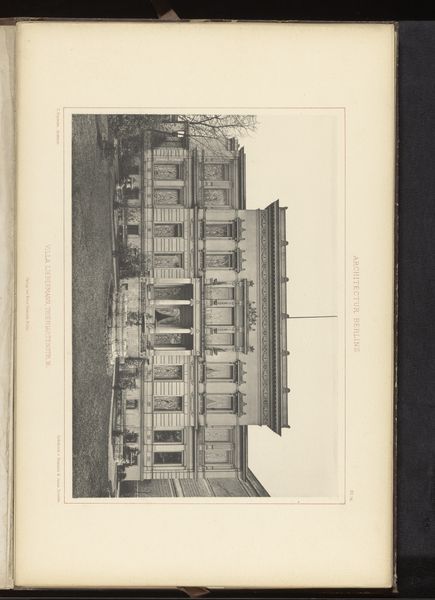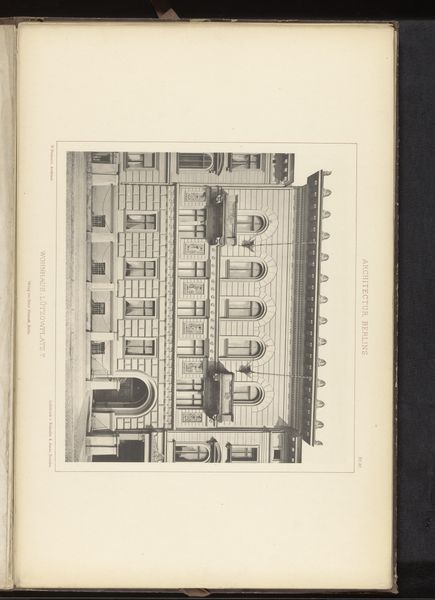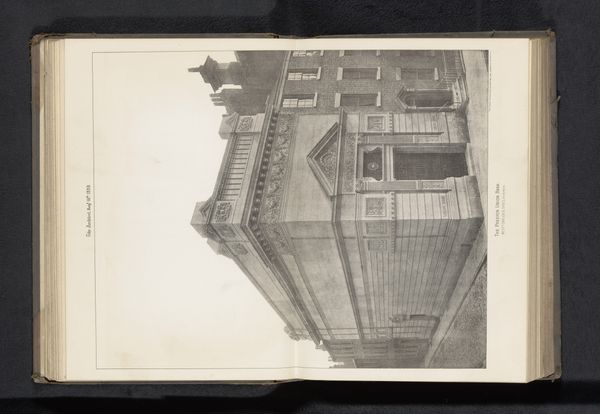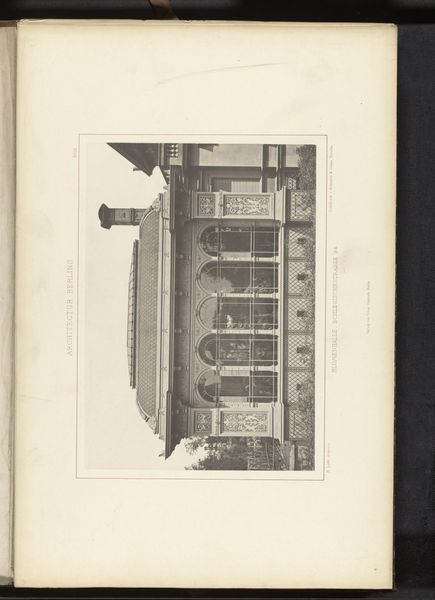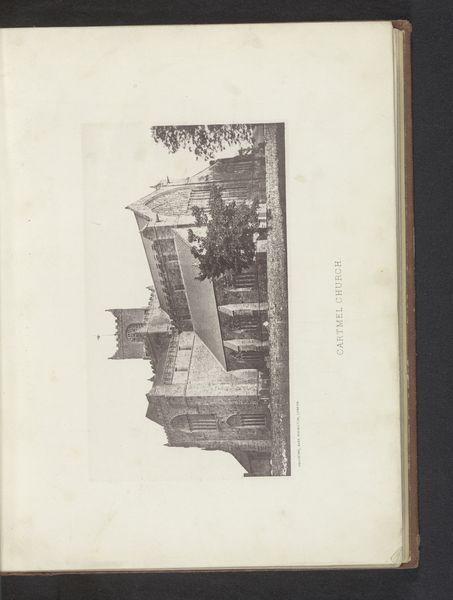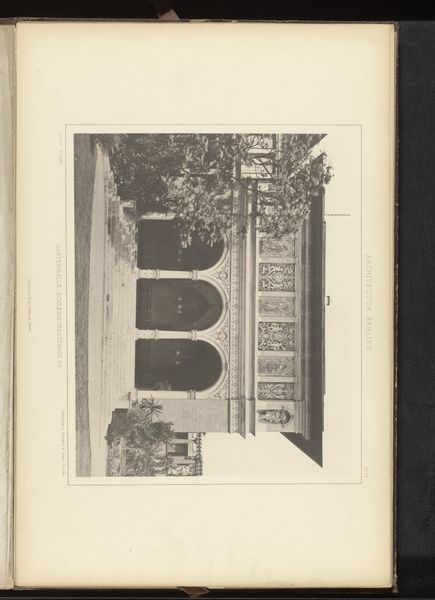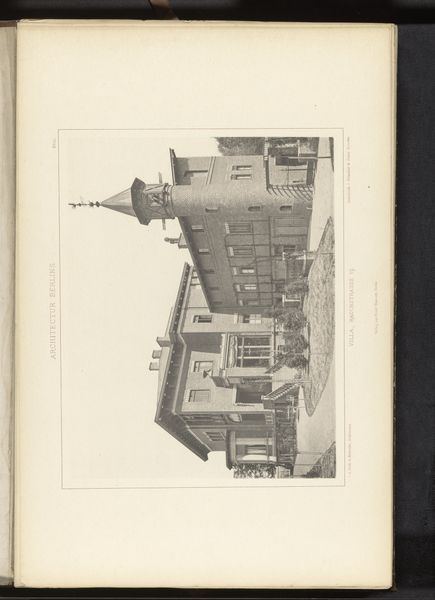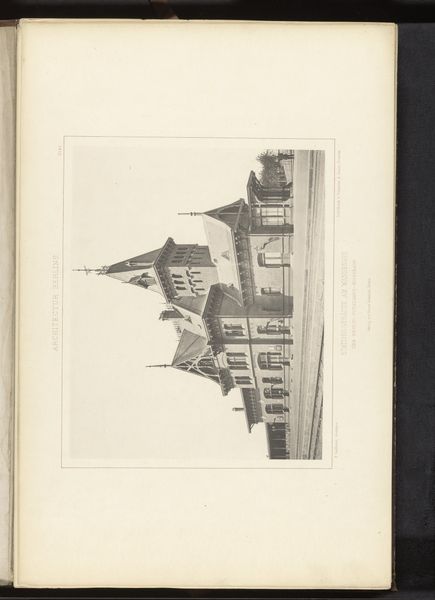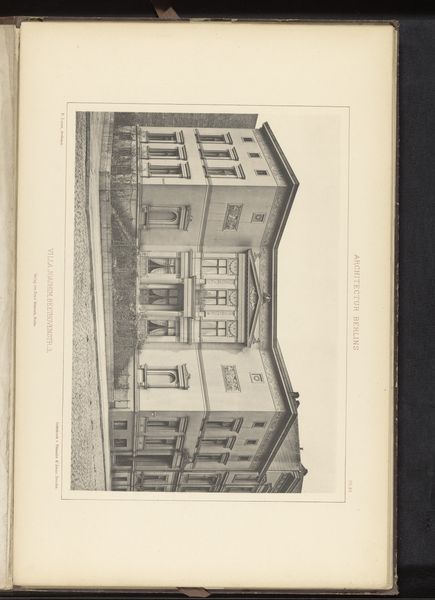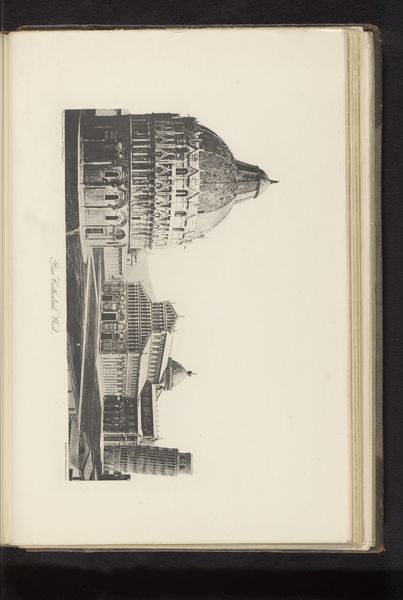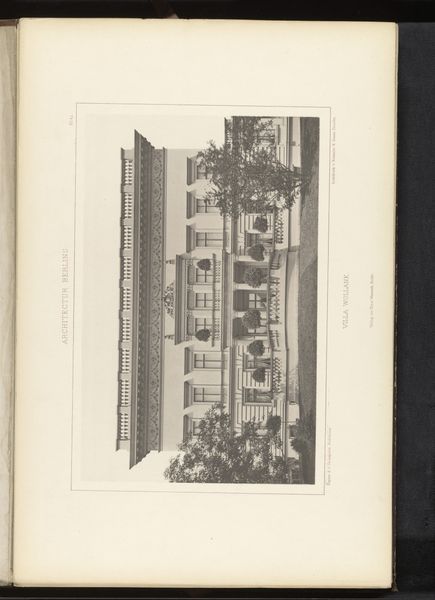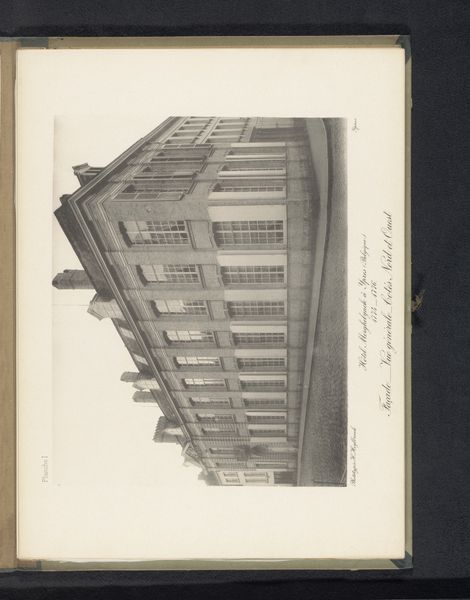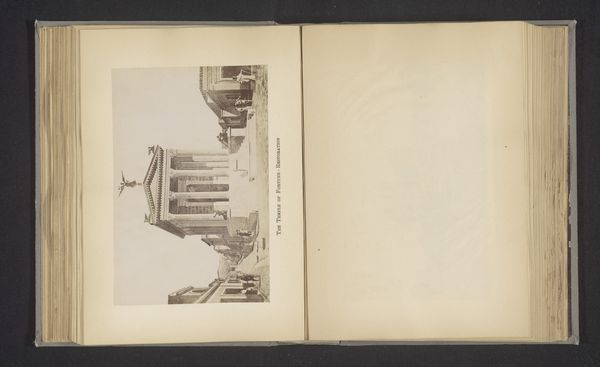
Gezicht op een woonhuis van een ambtenaar aan de Schlesischestrasse 17 in Berlijn, Duitsland before 1877
0:00
0:00
Dimensions: height 259 mm, width 298 mm
Copyright: Rijks Museum: Open Domain
Curator: This engraving, whose creation is attributed to an anonymous artist prior to 1877, depicts a "View of a Residence of an Official on Schlesischestrasse 17 in Berlin, Germany." Editor: It’s striking how static and detached it feels. The tight cropping, the almost clinical detail of the facade – it speaks to a certain austere propriety. What stands out to you? Curator: I see the building’s imposing design within the burgeoning administrative infrastructure of Berlin. Note the confluence of architectural styles, blending Neoclassical elements with burgeoning Realism. The solid construction broadcasts permanence and power. It projects both literal and symbolic weight, doesn't it? The location too - the Schlesischestrasse – would have been undergoing dramatic transformations. Editor: Indeed. The Schlesischestrasse itself becomes part of the narrative, indicative of urbanization. We need to unpack who this official was and their role in Berlin's socio-political life. What kind of power structures did this building physically embody? Curator: It allows us to probe the societal functions assigned to architecture during this transformative time, examining not just aesthetic concerns, but the material expressions of bureaucratic power. Editor: And by understanding that socio-political backdrop, we might better interpret why the engraver chose this viewpoint. Is it glorification, documentation, critique? And to what end was it disseminated? I imagine prints such as this helped construct an idealized vision of civic life? Curator: Precisely. Prints like this circulated amongst particular audiences, shaping perceptions of urban development and class. Looking through a contemporary lens, we can also ask whose voices are absent in this rather sanitized portrayal of urban life. Editor: Good point. Recognizing the absent narratives enriches the whole interpretation, giving us the agency to ask what stories are purposefully muted here. It shifts the dialogue from passive observation to critical inquiry. Curator: Precisely. I feel as though it exposes the inherent limitations within a strictly formalist study. By bridging art historical context with relevant sociological analysis, it illuminates layers unseen through pure visual inspection. Editor: Agreed. We have gained quite a deeper understanding today by examining how buildings also perform ideologies.
Comments
No comments
Be the first to comment and join the conversation on the ultimate creative platform.
